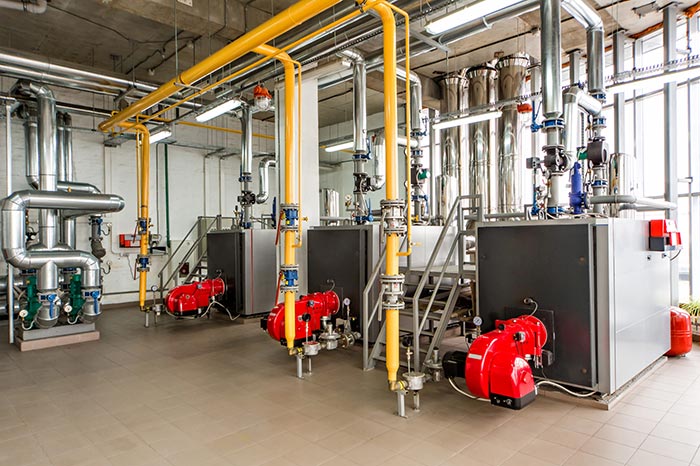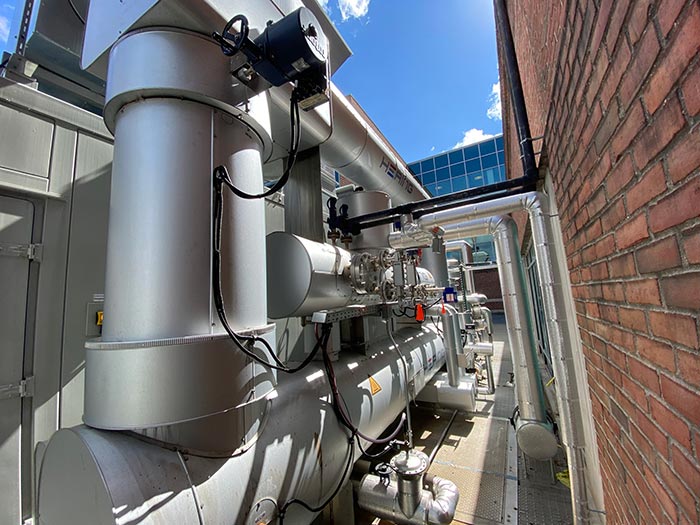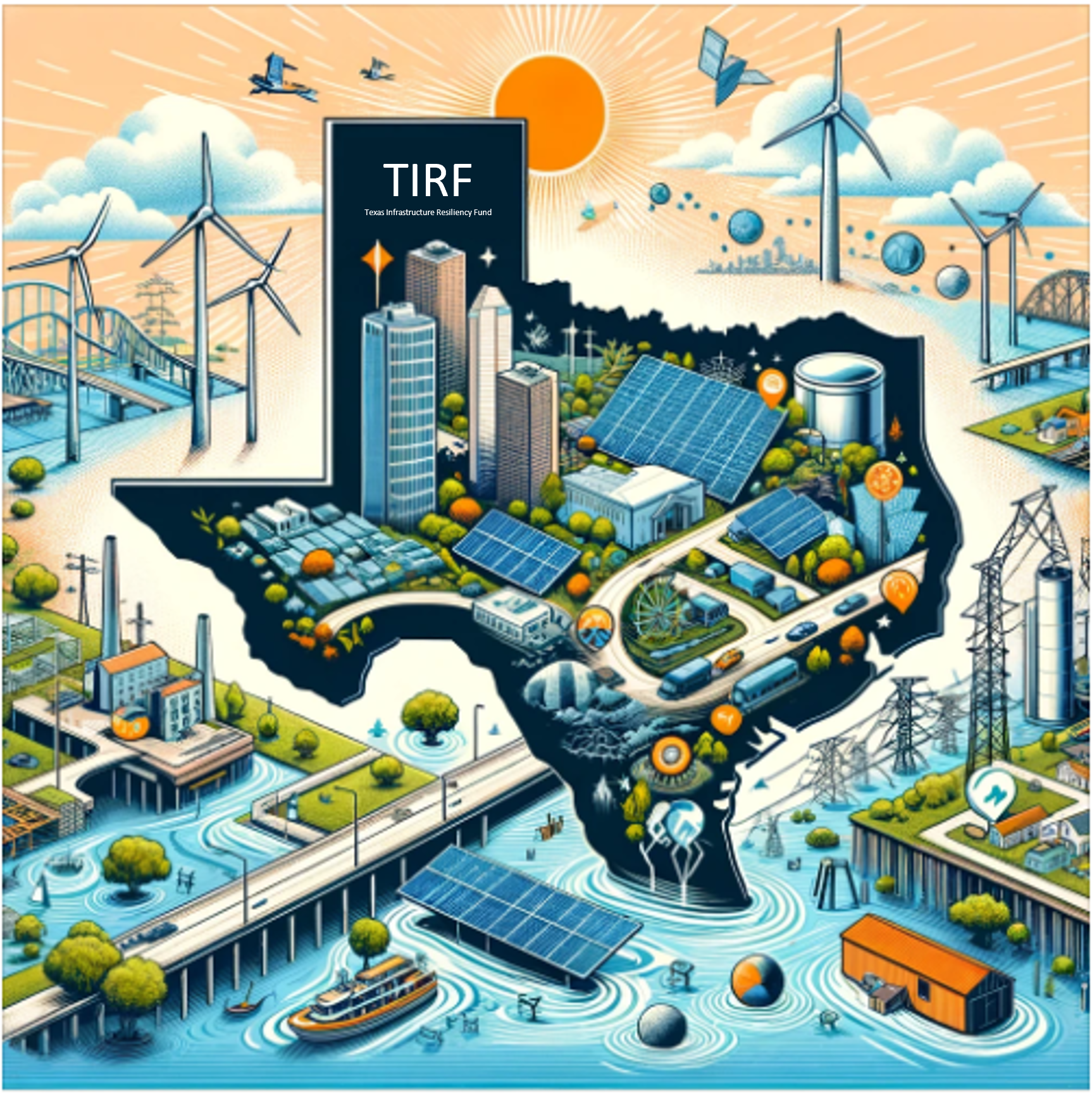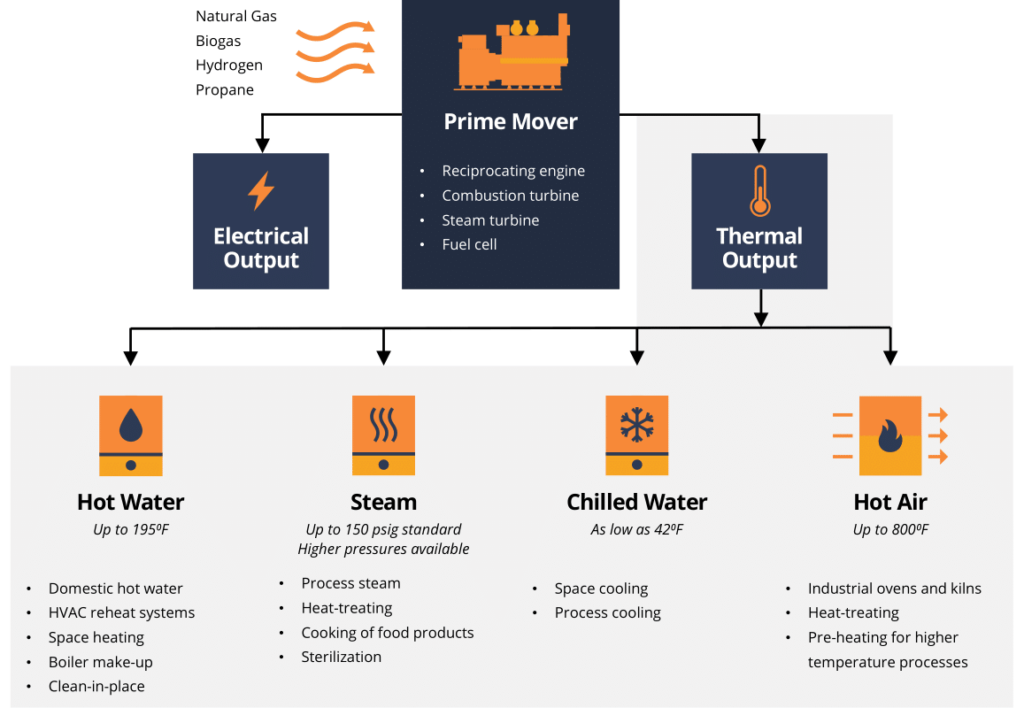Microgrid Heat Recovery Options

Microgrid systems offer facilities a way to support a range of thermal loads thanks to flexible underlying technology, typically resulting in cost savings and emissions reductions.
On-site combined heat and power (CHP) systems create heat as a byproduct of the power generation process. The heat from these microgrids can be easily integrated into a facility’s existing thermal systems to support the site’s heat, steam, and chilled water loads — a benefit that other types of microgrids can’t necessarily offer.
Every site has a unique set of thermal needs, and the good news for facility managers is that CHP, also called cogeneration, easily integrates with a wide range of heating and cooling use cases — offering cost savings, emissions reductions, and both electric and thermal resiliency in the process.
Thermal Applications 101
CHP microgrids can integrate with hot water, steam, or chilled water systems to help support a range of specific facility thermal usages.
The heat generated by CHP microgrids can be captured and used for thermal applications in the form of hot water, steam, chilled water, and hot air.
Hot Water: The most common and cost-effective usage for CHP thermal output is to generate hot water. Hot water can be used in many potable and non-potable heating applications. This includes a range of domestic hot water (DHW) cases, such as clean in place (CIP) systems in industrial settings or faucets and showers in hotels and hospitals, or heating hot water (HHW) applications, such as space heating.
In fact, space heating is one of the largest hot water applications in all types of commercial and industrial facilities. Space heating generally utilizes boiler systems to generate and distribute heat through a network of hot water pipes and radiators that are spread throughout the facility. Similarly, hot water is frequently used for HVAC reheat in humidity control applications because HVAC systems cool incoming air to the dewpoint to remove moisture from the air stream, but that can be below the space temperature setpoint. A hot water reheat coil warms the previously cooled air in order to maintain a comfortable temperature.
The advantage of space heating and HVAC reheat systems is that they can both use the same connection to the CHP system. This allows the microgrid to address space heating loads in the winter, reheat loads in the summer, and help balance seasonal variations. Reheat coils can be used for desiccant wheel regeneration, which is commonly used at supermarkets and cold storage facilities. Another common application is pool heating. Although pools are maintained at a relatively low temperature, their large volume and constant evaporative water loss can provide a significant, consistent thermal load for the CHP. Overall, for sites with particularly large hot water loads of any variety, CHP can be especially attractive.
Steam: Steam production is not as efficient as hot water CHP applications, but there are many instances where this is easily offset by compatibility with the facility’s existing steam network. Steam is very common in manufacturing processes, where it can be used to cook ingredients in food processing plants, process pulp at a paper mill, or heat-treat a variety of manufacturing materials. Additionally, campuses that require any level of sterilization use steam — hospitals use it to clean surgical tools while industrial sites need clean rooms for high-tech medical or semiconductor manufacturing. Like hot water, steam can be used for space heating and DHW loads, or it can be used to humidify spaces. Steam is also widely used in commercial and industrial laundry facilities.
Hot Air: CHP can additionally help generate hot air, which can be used in industrial applications. Hot air exhaust provides a more energy-efficient method of preheating industrial ovens and kilns, for example.
Chilled Water: CHP can be used to generate chilled water for cooling applications. In some cases, a facility may even have a cooling load and no heating load, as is common for data centers. Space cooling uses chilled water coils to cool space for facility comfort or cold storage, while process cooling keeps hardware and products from overheating. If a facility uses chilled water year-round for either application, then an absorption chiller might be a good option to improve the site’s efficiency.
How CHP Systems Generate Heat
Different CHP prime movers generate heat, in the form of hot exhaust gas and jacket water, at different rates, which typically means that reciprocating internal combustion engines are more effective for smaller facilities and gas turbines are better for larger sites.
CHP prime movers convert fuel (natural gas, biogas, propane, hydrogen, etc.) into electrical and thermal energy. Prime movers can take a number of forms, including combustion-driven industrial gas turbines, microturbines, reciprocating engines, and electrochemical-based fuel cells. They all generate heat as a byproduct of their conversion of fuel to electricity.
The two primary types of heat are high-grade heat (800-900°F) and low-grade heat (~200°F). A prime mover’s efficiency and power output relate directly to heat output: an engine with high electrical efficiency will have less heat available than one with low electrical efficiency. But as a system’s electrical power output increases, its thermal power output will likewise increase.
Industrial gas turbines and reciprocating internal combustion engines are the two most common forms of CHP prime movers.
Gas Turbines: These provide high-grade heat from the engine’s exhaust gas. However, turbines operate with electrical efficiency in the low-30% lower heating value (LHV), so they are able to provide lots of high-grade heat.
Reciprocating Engines: On the other hand, CHP prime movers can provide both high-grade heat from the exhaust gas and low-grade heat from the engine’s jacket water cooling loop. A reciprocating engine CHP offers roughly equal parts high- and low-grade heat. Electrical efficiency for reciprocating internal combustion engines is as high as ~42% LHV, meaning it, therefore, offers less heat for capture compared to a similar capacity turbine, but often the improved heat rate — where more electricity is generated with the same amount of gas — is beneficial enough to offset this.
The biggest difference between the two technologies is electrical efficiency, and the best option for a given site will be determined by how the facility uses heat already. By the numbers, a reciprocating engine is better when it comes to electrical efficiency, but gas turbines tend to be a much better fit for supporting facilities with large steam loads.
The overall size of the facility may provide some indication as to which technology will be a better fit. Generally, smaller facilities (i.e. those under 5 MW peak electrical demand) find a reciprocating engine to be more cost-effective; facilities between 5-10 MW are either/or depending on their steam needs, and facilities over 10 MW should at least consider gas turbines, but the best fit may ultimately depend on the site’s thermal needs.
How CHP Systems Deliver Heat
To integrate a CHP system with an existing thermal application, facilities will need to take heat delivery into consideration.
Typically, exhaust heat from the CHP prime mover cannot be directly applied on-site at the facility — it must be transferred from the prime mover, typically in the form of hot water, steam, or chilled water. The exhaust gas heat and/or jacket water heat can be used to transfer thermal energy in a few different ways.
Hot Water: This can be produced from both exhaust gas and jacket water heat. The goal, generally, is to use as much hot water as possible from the CHP before turning to steam or chilled water applications. These other media require additional equipment — specifically a heat recovery steam generator or an absorption chiller to produce chilled water. So, while reciprocating internal combustion engines may be the most cost-effective option for hot water loads, it may not be the best option for more complicated systems.
Steam: On the other hand, steam can only be produced from the prime mover’s exhaust gas heat. As mentioned, steam requires a separate heat recovery steam generator paired with the prime mover. Gas turbines tend to make 2-3 times more steam available per kW than a reciprocating engine due to their lower electrical efficiency.
Chilled Water: This can also be produced from both exhaust gas and jacket water heat. To generate chilled water, the heat from a CHP is used to drive an absorption cooling cycle, where water is the refrigerant and lithium bromide as the absorbent. This requires a separate absorption chiller and cooling tower, which adds to the overall system cost. The lithium bromide absorption cycle can be driven by hot water, steam, exhaust, direct-fire, or some combination of these. A single effect chiller uses hot water only to drive the process, but the ratio of chiller output to energy input (the coefficient of performance, or COP) is only about 0.75. A double-effect chiller needs a higher grade heat input, but the COP can be as high as 1.4.
Hot Air: Using hot air as a heat medium is only common with gas turbines in industrial settings that require heat treating or preheating concrete and gas-fire kilns. The turbine’s exhaust gas can be used to heat the air or some other material (with an air-to-air heat exchanger) before delivery to downstream manufacturing processes.

Thermal Recovery Solutions in Action
Unison Energy has helped facilities improve their thermal efficiency with CHP microgrids tailored to meet the specific needs of each site.
Unison Energy designed a 1.2 MW CHP system for a large hospital consisting of one 1,200 kW reciprocating engine that functions as a microgrid with island mode capabilities. The site currently captures both steam and hot water from the engine. In the process of installing the microgrid, Unison renovated the site to include a new heat recovery steam generator (HRSG) to convert exhaust gas heat into steam thereby enabling more efficient space heating while simultaneously recovering engine jacket water heat to supplement the hospital’s domestic hot water supply. This ultimately reduced the facility’s carbon footprint by 61% — 6,900 tons of CO₂ per year.
In another case, Unison Energy is installing two 1.5 MW reciprocating CHP engines, paired with a 680-ton absorption chiller at a data center in Massachusetts. Chilled water from the absorption chiller is tied into the data center’s primary chilled water loop without impacting the data center’s downstream HVAC system. Because all the utility interfaces are outside the data center’s whitespace, Unison doesn’t enter the facility to service the equipment at all.
In a third case, Unison Energy developed a project that includes two 8 MW gas turbines at a large food processing plant, each with a heat recovery steam generator to convert exhaust gas to steam — totalling around 70,000 pounds of steam production per hour. This will allow the CHP to reduce load on the facility’s sizable steam boiler plant (six boilers in total) by 65% of their annual gas usage. This allows the facility to save on energy costs and to reduce their emissions and carbon footprint.
Designing CHP Systems Suited to Support Your Thermal Needs
Ultimately, the goal is to ensure that your CHP microgrid is doing the most work it can on your behalf. Determining the best approach is a simple matter of starting with how you already use heat in your facility and then working backward to find a compatible solution.
Unison Energy helps to develop and operate on-site power generation solutions that meet the specific energy and thermal needs of facilities and campuses.
Our project development process begins with taking the time to thoroughly understand the specific needs of each site so that we can incorporate those factors — including thermal loads — into the design and operation of the CHP engine itself.
To learn more about how CHP could support your facility’s thermal loads, click here to contact a Unison Energy sales representative.
Energy insights, delivered
Subscribe for more content.
Related Blogs

The Texas Infrastructure Resiliency Fund: Empowering Businesses with Onsite Microgrids
Deadlines for the Inflation Reduction Act
Canadian Carbon Reduction Incentives: What You Should Know
